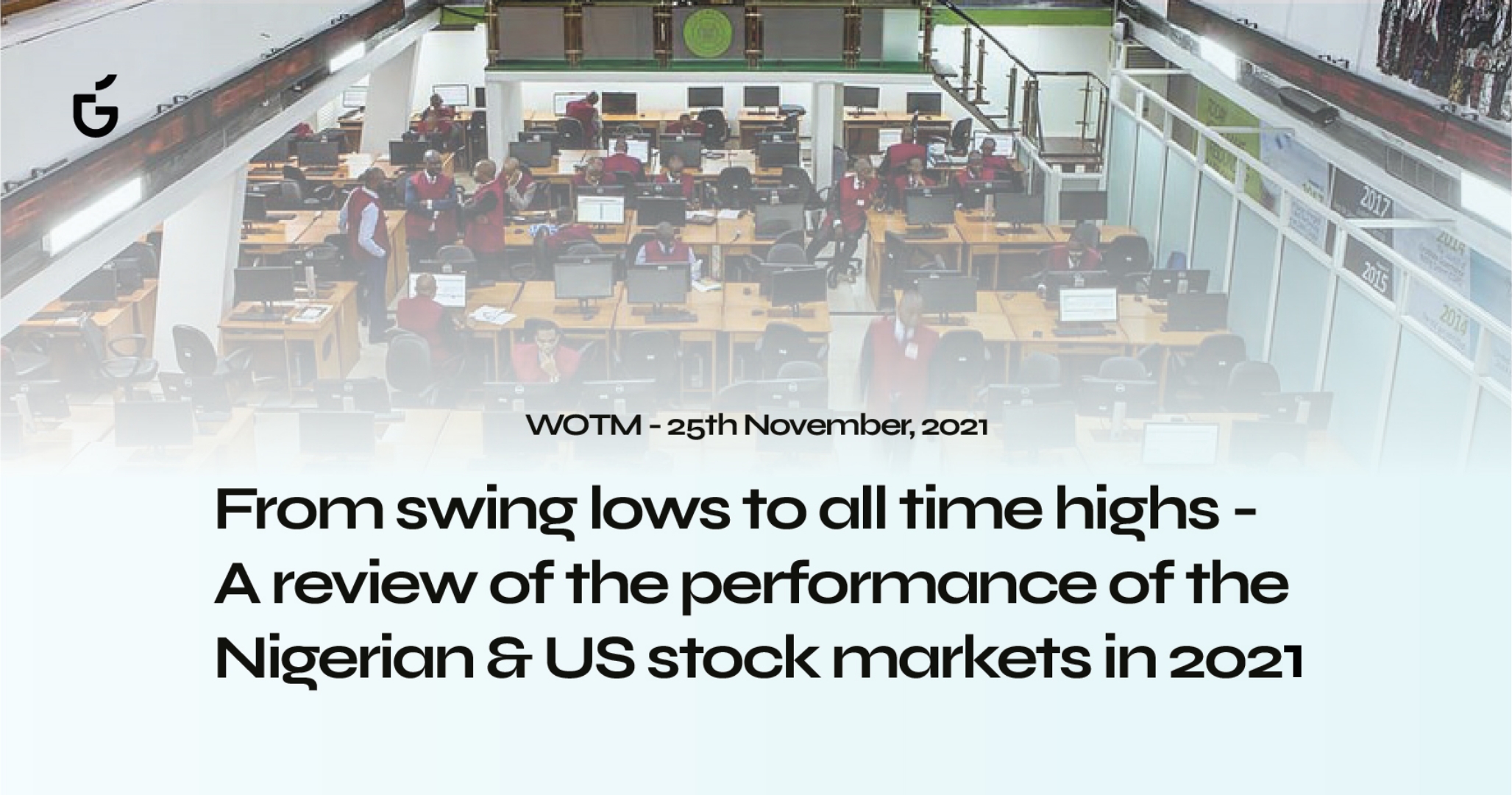 Africa
AfricaUnderstanding how companies are valued – A look into the MainOne acquisition
15 December, 2021
01 December, 2021 | 4 MINS READ
The Story
Bollywood star Amitabh Bachchan, recently auctioned his collection of NFTs for a whopping $1,000,000. Part of the collection was his father’s poem, recorded in his own voice which sold for as much as $756,000. After the auction, Amitabh said “In this world of digitization, NFTs have opened a new realm of opportunities to engage with my fans even more than before. The successful auction of my NFTs, some of the most treasured and personal moments of my life and career were so well received and invested in by my supporters”.
What exactly are NFTs?
In financial markets, fungible assets are assets that can be exchanged or converted into another asset. Examples are convertible bonds (bonds that be converted into stocks), money is also considered fungible as a $100 bill can be converted into two $50 bills and the value would not change.
Non-fungible assets are assets that cannot be exchanged for another asset. They are unique and unchangeable. Examples are precious stones like diamonds and real estate properties.
NFTs are non-fungible tokens, they are digitalized assets. They cannot be altered, exchanged, or replicated.
How do NFTs work?
NFTs, tokenize assets to create a digital certificate of ownership that are secured by blockchain. The digital certificate being secured on blockchain implies it is maintained by thousands of computers around the world and so, it cannot be duplicated.
Ownership of an NFT can be managed through a unique ID and metadata which no other token can replicate. This implies an NFT can have only one owner at a time. NFTs come with smart contracts that assign ownership and manage their transferability.
Though the most popular use case for NFTs is artworks and other collectables, almost anything unique can be converted to an NFT. A popular example is the conversion of the first tweet ever into an NFT which sold for $2.9million.
Peculiarities of NFTs
There are a couple of things that distinguish NFTs from other assets. Here are a few
How NFTs are changing the art market
Before the emergence of NFTs, artists didn’t find it very easy selling their pieces at a price good enough to compensate for their work. Selling through social media only got them engagements that didn’t translate to actual sales. NFTs are changing that narrative, with about $40 – $200 an artist can mint digital tokens by inputting their information on the blockchain. After which their pieces can be listed for auction on an auction website or an NFT marketplace.
With NFTs, artists can trade directly online on auction sites, this cuts out the need for art dealers and auction houses like Sotheby. This also eliminates the need to vet art collectors to stop speculators from flipping artworks. NFTs gives anybody and everybody access to the art market and prices that used to be unknown are now publicly displayed on auction sites.
NFTs unlike other means of selling art gives artists the opportunity to retain a copy of their work even after it is sold. Artists also get paid whenever their work is resold, a royalty system built into NFTs makes this possible. All of these, make NFTs attractive to artists and partly explain the NFT frenzy.
How the NFT market has fared so far
The NFT market started out with unknown artists participating in the market. Activities in the market peaked in March 2021, when an American artist known as Beeple sold an NFT of his previous artwork on Christie’s (an art auction house in New York) for $69.3mn. This is the most expensive NFT to date.
The market came alive when it became apparent that almost anything can be digitalized and called art. The NFT market now has not just art creators in it, celebrities, musicians, actors, sports personalities etc. now actively participate in the NFT market. A film director sold an audio file of his farts for $85; Jack Dorsey sold the first tweet ever for $2.9mn, Kate Moss sold a gif of herself for $17,000 and Paris Hilton owns over 150 NFTs and has sold a few of her own.
The volume of trade in the NFT market dropped by 60% in May 2021 when the issue of the carbon footprint of blockchain came to the fore. The NFT market recovered quickly from this as the volume of trade jumped from $1.3bn in Q2 2021 to $10.7bn in Q3 2021. The market is being driven by the belief that NFTs have long term value and will appreciate over time.
Investors are optimistic about the technology driving NFTs (blockchain) and see a number of use cases for NFTs. A new use case for NFTs is with in-game items. In Q3 2021, sales of NFT in-game items like skins and accessories generated 22% ($2.3bn) of the entire trade volume in the NFT market in the period.
Can NFTs be considered an investment?
Art collection and investment in art has been in existence for several years. The wealthy elites are known for buying artworks at auctions and reselling at high prices, some choose not to sell their collection but pass it on to their children. A popular couple (the Macklowes), recently divorced and decided to sell their art collection as part of the settlement for their divorce. The collection sold for $676million, the highest sale ever by a single collector.
The digital form of artworks, NFTs, can also be seen as assets that art investors can take advantage of. Collectables have also benefited from the advent of NFTs, as sports cards that were valued for tens of dollars, now trade for hundreds and even thousands of dollars. Holders of such cards have become millionaires. The NFT market is still new and like every new market, its movement is expected to be a little erratic.
The market emerged from the use of blockchain and has use cases that can keep it relevant for a long time. The next phase of technology is believed to be metaverse, which is a world of virtual reality. With NFTs already creating in-game items for virtual games, its relevance in the metaverse is undisputable.
Also, as Rolexes are seen as a status symbol in the real world, owning NFTs are seen as a means of building social capital in the world of cryptocurrencies.
Just as NFTs are disrupting the art industry, more digital products are expected to emerge from blockchain that will disrupt and radically transform every aspect of the existing capitalist economy, from finance to healthcare.
 Africa
Africa15 December, 2021
 Africa
Africa09 December, 2021
Join the biggest
investment club in Nigeria.